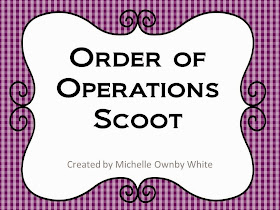This week I tried a new classroom activity and I think my students enjoyed it. I feel like they understood the material a little better than usual after doing
Keep It or Junk It.
I divided the class into groups to read a section in the text and create a list of words that would help them answer the focus question. Our focus question for this lesson was: "What is erosion and what are the ways in which it happens?"

The students decided if they would read together and make their own personal list or if they would read alone while making the list. Once they developed their own list their group had to work to develop a group list of words that would answer the focus question. They voted by showing numbers with their fingers- 1 keep it, 2 junk it, or 3 cloud it. If they put it in the cloud they had to come back to the word when they finished and make a decision.

Then each group shared their list with the class as a whole. Then the entire class voted on words to add to the class list for keep it or junk it.

Both of the science classes developed a list. In the end they used the list of words to write a paragraph to answer the focus question for the lesson.




Here are just a few pictures of the notebook pages that each individual made. You can see on the first list the ones crossed out were the ones that group decided to junk.


We also used the iPads during this activity. I had the students add information to the wall about weathering. For this wall, They were able to share what they thought weathering was, we added the list of words, and some definitions. I thought this would be a great summary of information and a great way for students to revisit what we did when they need to study. I posted a link for this wall on our Edmodo page for the students. Both classes contributed to this wall.
If you don't know about Padlet you have to check it out!
At the end of the week I asked a small group to create a Gami about keep it or junk it. I let them decide what to say and how to do the gami. Austin created this one along with the help of his group members. I love the way he took a picture of our classroom so it looks like his character is talking in our class! Great job guys!
Check out my previous post with the posters for Keep It or Junk It.
This week our math coach, Mrs. Hamlet came to do an activity with my math classes.

She had
decimal math task cards and the kids played a scoot game to answer each card. Then she had a QR code sheet the students used to check their answers.


We had enough iPads so that each group was able to share to check their answers.

STUDENTS: How do you feel about keep it or junk it? I felt like you guys were able to defend your choice of words so well. Do you think you understand more about weathering and erosion because of this? Would you like to try it again?

